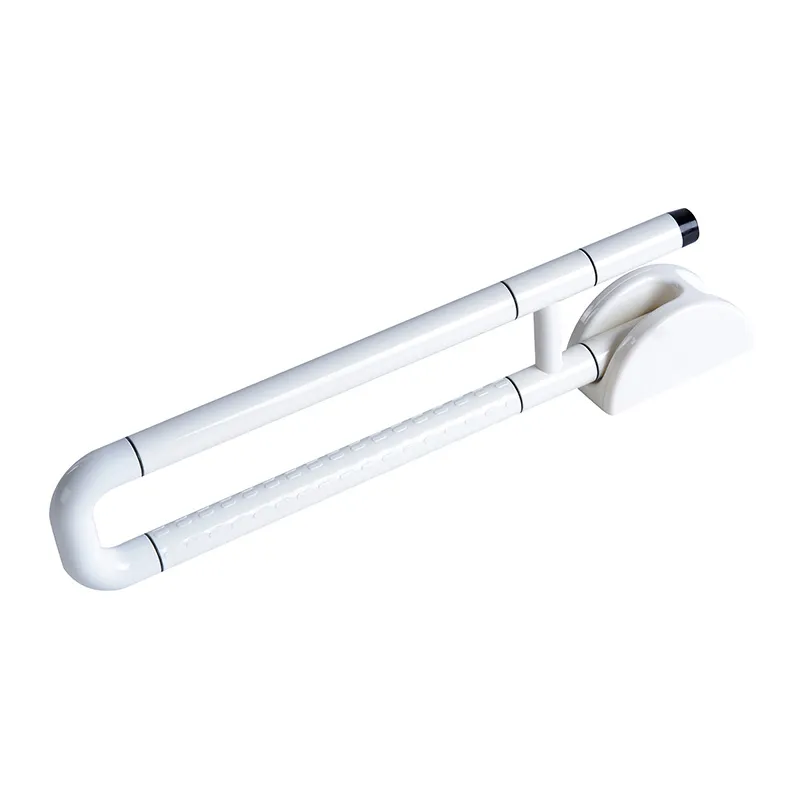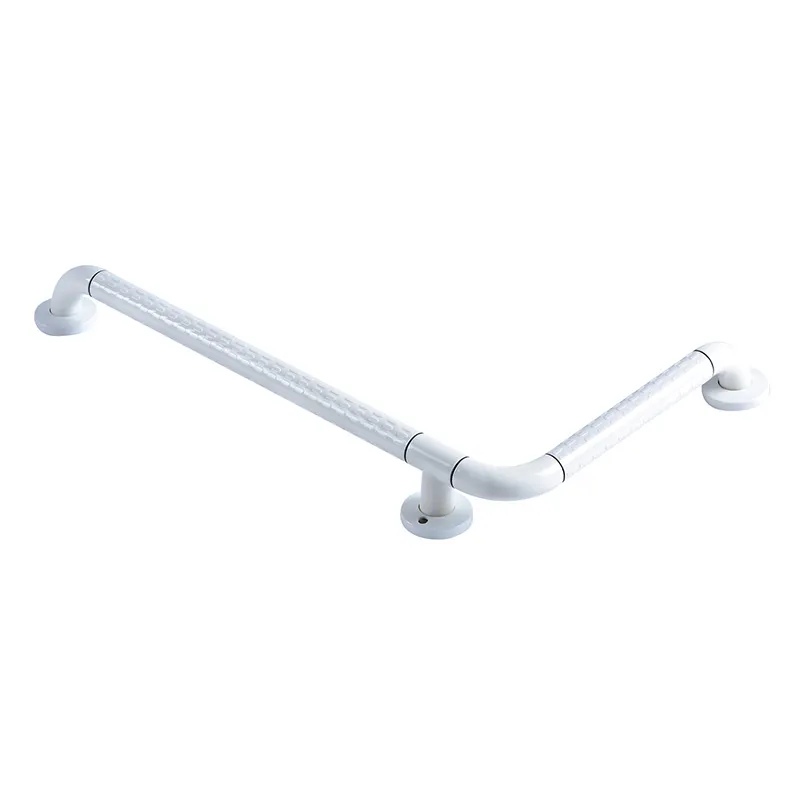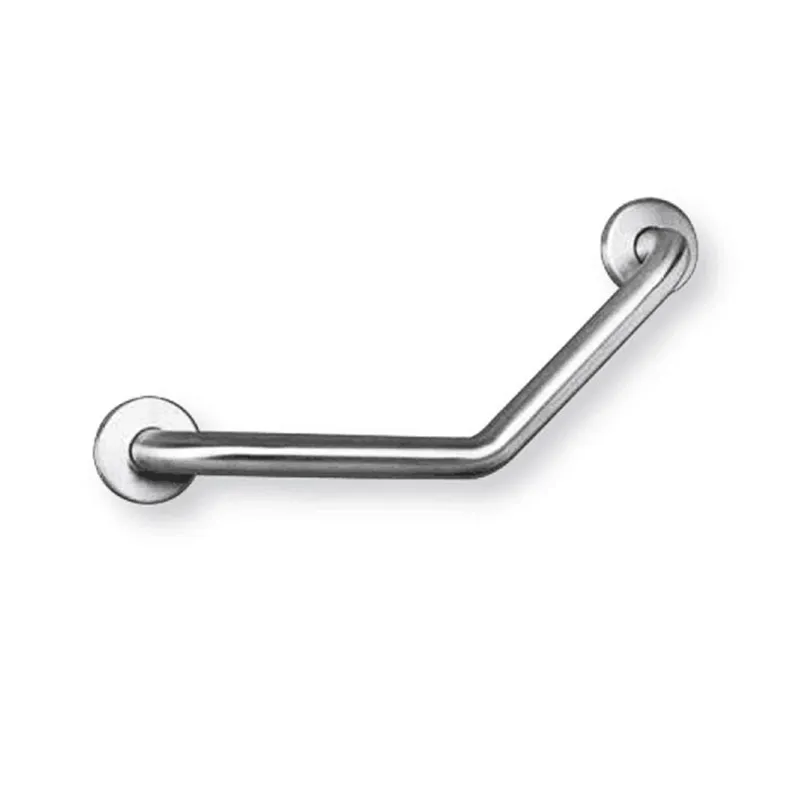
What are bathroom grab bars? What does it do?
2024-09-23 15:30
Bathroom grab bars are assistive devices installed in bathrooms designed to provide additional support and stability to help people maintain balance during bathing, toileting and other bathroom activities. Especially for the elderly, disabled or those with limited mobility, bathroom grab bars can significantly improve safety and reduce the risk of slips and falls.
This article will delve into the definition, types, installation methods of bathroom grab bars and their important role in daily life.

What are bathroom grab bars?
Bathroom grab bars are an auxiliary device designed specifically for the bathroom environment and are usually made of sturdy materials such as stainless steel or plastic. They attach to the wall and provide users with a reliable point of support to help them maintain balance in slippery conditions. Bathroom grab bars are usually installed in key locations such as bathtubs, showers, and near toilets.
What types of bathroom grab bars are there?
According to different uses and installation locations, bathroom handrails can be divided into straight handrails, L-shaped handrails, folding handrails, angular handrails, suction cup handrails and other types. The details are as follows:
1. Straight grab bars: The most common type, usually installed on the wall of the tub or shower, providing vertical or horizontal support.
2. L-shaped armrest: This type of armrest has a right-angle bend to provide an additional support surface and is suitable for installation in corners or places that require multi-directional support.
3. Folding armrest: This kind of armrest can be folded when not in use to save space. It is usually installed next to the toilet to facilitate users to use the toilet.
4. Angle handrail: This kind of handrail is suitable for installation in the corner of the bathtub or shower room, providing support in two directions and increasing stability.
5. Suction cup armrest: This kind of armrest is fixed on the wall through suction cup. It is easy to install and does not require drilling. However, it has poor stability and is suitable for temporary use.

How to install bathroom grab bars?
The installation of bathroom grab bars requires professionals to ensure their stability and safety. Here are a few key steps for installing bathroom grab bars:
Determine the installation location:
First, you need to determine the installation location of the handrails. The installation location should be chosen based on the user's height and range of motion, usually on the wall next to the bathtub, shower or toilet.
Choose the right handrail:
Choose the appropriate type of grab bar based on the needs of the user and the specific circumstances of the bathroom. Make sure the material and length of the handrail are suitable for the installation location and provide adequate support.
Installation process:
● Measure and mark: Use a tape measure and level to measure and mark the installation location of the handrail to ensure it is horizontal or vertical after installation.
● Drilling and fixing: Use an electric drill to drill holes at the marked locations, and then use screws and expansion bolts to fix the handrail to the wall. Make sure the screws are fully tightened and the armrest is secure.
● Check the stability: After installation, check the stability of the handrail to ensure it can withstand the user's weight and tension.
What is the function of bathroom grab bars?
Bathroom grab bars play an important role in daily life, especially for the elderly and people with limited mobility. Bathroom grab bars provide indispensable safety protection. The main functions of bathroom handrails are to provide support and stability, enhance independence, prevent slips and falls, and facilitate rehabilitation training.
Provide support and stability:
The main function of bathroom grab bars is to provide support and stability. A slippery bathroom environment can easily lead to slips and falls. Handrails can help users maintain balance when standing, sitting or moving, reducing the risk of accidents.
Increase independence:
For the elderly and disabled, bathroom grab bars can enhance their independence, allowing them to complete daily activities such as going to the toilet and bathing more independently, reducing their dependence on others, and improving their quality of life and self-esteem.
Prevent slips and falls:
Slips and falls are a major risk faced by older adults and people with limited mobility in bathrooms. Bathroom handrails provide a reliable support point, which can effectively prevent slips and falls and ensure the safety of users.
Facilitate rehabilitation training:
For some people who are undergoing rehabilitation training, bathroom grab bars are also an important auxiliary tool. When performing balance and strength training, handrails can provide additional support and help them perform rehabilitative exercises safely.

How to choose bathroom grab bars?
When choosing bathroom grab bars, there are several factors to consider:
●Material: Stainless steel handrails are corrosion-resistant, durable, and suitable for long-term use; plastic handrails are lightweight and low-priced, but have poor durability.
● Length: The length of the handrail should be selected according to the installation location and usage requirements. It is usually recommended to choose a length of 40 to 60 cm.
● Installation method: Fixed handrails are more stable, but installation is complicated; suction cup handrails are easy to install, but have poor stability and are suitable for temporary use.
How to maintain bathroom grab bars?
Bathroom handrails require regular inspection and maintenance during use to ensure their safety and service life:
● Check the screws: Check the fixing screws of the handrail regularly to ensure that they are not loose and retighten them if necessary.
● Cleaning and maintenance: Clean the surface of the handrail regularly to avoid accumulation of water and dirt. Keep the handrail dry and clean to prevent slipping.
● Replace damaged parts: If the handrail is found to be damaged or showing signs of aging, it should be replaced in time to ensure its stability and safety.








